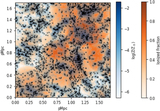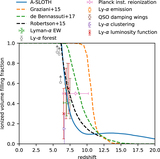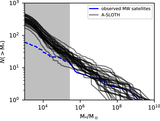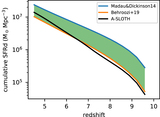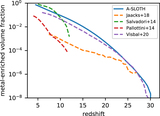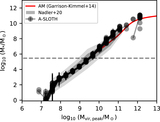Image Details
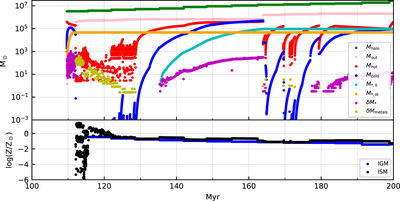
Caption: Figure 3.
Illustration of the baryonic subcycling and what physical quantities are available within A-SLOTH. Top: various mass contents along one merger tree branch as a function of time after the big bang. Bottom: gas metallicity of the IGM (blue) and ISM (black). The illustrated time corresponds to the redshift range z = 27 − 18. We witness the formation of the first Pop III stars around 110 Myr (orange), the suppression of further star formation by SNe around 120 Myr (olive), the accumulation of further cold gas around 130 Myr (blue), and the formation of second-generation stars after ∼140 Myr (cyan). The ISM metallicity experiences strong variations during the first SN explosions. This is due to the small amount of residual gas and metals that remain in the halo. The new stellar mass δ M * (purple) and the ejected metal mass δ M metals (olive) are the instantaneous values at the specific time step during subcycling. The halo mass M halo (green) increases in steps, which illustrates the original redshift steps from the merger tree. The stellar masses (orange, cyan) and outflow mass (pink) are cumulative and therefore monotonically increasing.
Copyright and Terms & Conditions
© 2022. The Author(s). Published by the American Astronomical Society.




